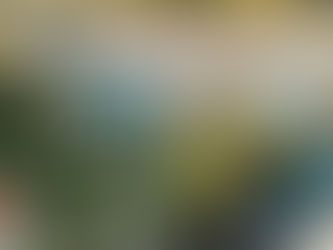How architecture can work with nature: The vision of a Third Paradise
- Kaan Servi

- May 13
- 3 min read
Updated: May 23

Biophilia simply means “love of life.” Although the Industrial Revolution and technological advancements have created a divide between nature and humanity, the concept of the Third Paradise can still be realized. The relationship between humans and nature has shifted from full integration to separation due to modern urbanization and technological progression. Michelangelo Pistoletto embodies the idea of the Third Paradise, where humanity, technology, and nature are mutually reconnected.
Biophilic design refers to the understanding of our connection with nature and natural systems to enhance well-being. Rather than being a luxury, biophilia is a necessary element that brings nature into our spaces, promoting both individual mental well-being and global sustainability.
In architecture, the philosophy of biophilic design has a long historical context. Rather than merely bringing green into enclosed spaces, its essence lies in the fundamental concept of adaptation through form, materiality, and atmosphere. The article will examine two real-world approaches to and reinterpretations of biophilic design. It will also explain why biophilia should be viewed more broadly than just as an effort to create green buildings, but instead to create a Third Paradise. Fallingwater, as a first example, integrates into its existing green habitat while its humble form expresses the notion of revealing the essence of nature. Sagrada Familia, on the other hand, interprets the idea of “how to work with nature” in an urban context by mimicking its essence in an artificial landscape. These two concrete examples display the possibility of creating a Third Paradise that reunites nature, humanity, and technology for the future.
The icon: Fallingwater
Fallingwater designed by Frank Lloyd Wright is an icon of modern architecture, and also a true manifestation of the biophilia philosophy. Constructed between 1936 and 1938 on a rocky site overlooking a waterfall, this former vacation home harmoniously embraces nature, blurring the boundaries between the man-made and the natural world. Locally sourced stones turn into walls and cream-colored horizontal slabs and terraces, floating among the surrounding greenery. While visual connections to nature are critical in biophilic design, it also aims to engage other senses.
Therefore, Fallingwater is a spiritual and physical manifestation of men and architecture in harmony with nature.

Process and form: La Sagrada Familia
Conceived by Antoni Gaudí, this Roman Catholic church is a reflection of time and process. It exemplifies the principles of nature within an urban biophilic context. Construction started in 1882 and is expected to be completed in 2026. Located among Cerdà’s urban blocks, the church contains connotations from nature in terms of visual appearance and unique feelings. The Sagrada Familia mimics the law of nature. Its fluid form is the result of Gaudí’s experimental hanging chain models. By using gravity, he discovered the most appropriate shapes for efficient structural performance.
The church incorporates three-dimensional forms such as hyperboloids, parabolas, helicoids, and conoids. Horizontal loads are transferred through a forest of twisted columns, resembling tree branches. These structural pyrotechnics thin the building’s skin, which helps meet acoustic requirements and eliminates unnecessary additions such as flying buttresses. Stained glass windows, forming a glowing and translucent membrane of kaleidoscopic hues, lead visitors into a mesmerizing experience. You feel as though you are in a surreal forest, protected beneath stone columns, peacefully admiring the colorful stained glass windows, and fascinated by gigantic fluid forms. Nature is expressed through architecture, allowing us to fall in love with both the natural world and its spirit, symbolized in stone.
Photo: Sagrada Familia in Barcelona, Spain | Photo credit: Patrice Audet, Berk Ozdemir, S Motri
Credit & Sources:
Cohn, David “Gaudi’s Sacred Monster: Sagrada Familia, Barcelona, Catalonia”, The Architectural Review, July 25, 2012, https://www.architectural-review.com/buildings/gaudis-sacred-monster-sagrada-familia-barcelona-catalonia
Jones, Rennie “AD Classics: La Sagrada Familia / Antoni Gaudí” ,Archdaily, October 16,2013, https://www.archdaily.com/438992/ad-classics-la-sagrada-familia-antoni-gaudi
Kellert, Stephen R. “What Is and Is Not Biophilic Design?”, Metropolis Magazine, October 26, 2015,
https://metropolismag.com/viewpoints/what-is-and-is-not-biophilic-design/
Kellert, Stephen R. and Heerwagen, Judith and Mador, Martin, Biophilic Design: The Theory, Science and Practice of Bringing Buildings to Life (Wiley,2011).
Chujor Okaseobari Ngwia. et al. "Biophilic Design: A review of Frank Lloyd Wright Falling
Water." IOSR Journal of Environmental Science, Toxicology and Food Technology (IOSRJESTFT), 13(4), (2020): 06-15. https://doi.org/10.9790/2402-1404020615.
Beulah International. “Biophilic Design More Than Just Plants.” Accessed April 26, 2025. https://beulahinternational.com/lab/biophilic-design/
Fazzare, Elizabeth “Fallingwater: Everything to Know About Frank Lloyd Wright’s Masterpiece” , Architectural Digest, October 20, 2023, https://www.architecturaldigest.com/story/fallingwater-everything-to-know-about-frank-lloyd-wrights-masterpiece
Zhong, Weijie, Torsten Schröder, and Juliette Bekkering. “Biophilic Design in Architecture and Its Contributions to Health, Well-Being, and Sustainability: A Critical Review.” Frontiers of Architectural Research 11, no. 1 (February 2022): 114–41. https://doi.org/10.1016/j.foar.2021.07.006.
Gomez-Moriana, Rafael. "Gaudí’s Hanging Chain Models: Parametric Design Avant la Lettre?" Criticalista, August 16, 2012. https://criticalista.com/2012/08/16/gaudis-hanging-chain-models-parametric-design-avant-la-lettre/.
















